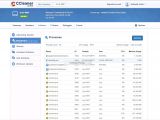
#Ccleaner cloud yearly software#
Software on the other hand lists information about the operating system, running processes, startup items and installed software. Hardware lists all the devices and specs of installed hardware including RAM, motherboard, cpu but also detailed information about network cards and peripherals. There you find listed all computer systems connected to the account and their status.Ī click on the computer displays hardware and software information that may have been taken directly from the company's Speccy application. The only settings available let you configure the type of Internet connection (direct or proxy), and the logging detail level.Įverything else is handled on the web.

The program runs in the background and provides little configuration options. CCleaner is only available for Windows so that is another limitation currently. The free version is limited to three devices that you can add this way. The core difference between the two is that the first requires input of username and password while the second does not (hand the second to your parents, family members or friends whose computer systems you manage). You may download account-specific or account-independent installers. Once that is out of the way you need to download installers for each computer system that you want to control using CCleaner Cloud. It may take a while before you get the invitation as the system is still invitation-based currently (it took a couple of hours in my case). The first thing you need to do to get CCleaner Cloud working is to create an account on the official site. Access requires a modern web browser only but no software installation on the control system so that you can control Windows PCs from Linux, Macs or other operating systems as well using CCleaner Cloud.

One of the core differences between regular CCleaner versions and CCleaner Cloud is that the control center has been moved to the web so that you can control one or multiple computer systems remotely.


 0 kommentar(er)
0 kommentar(er)
